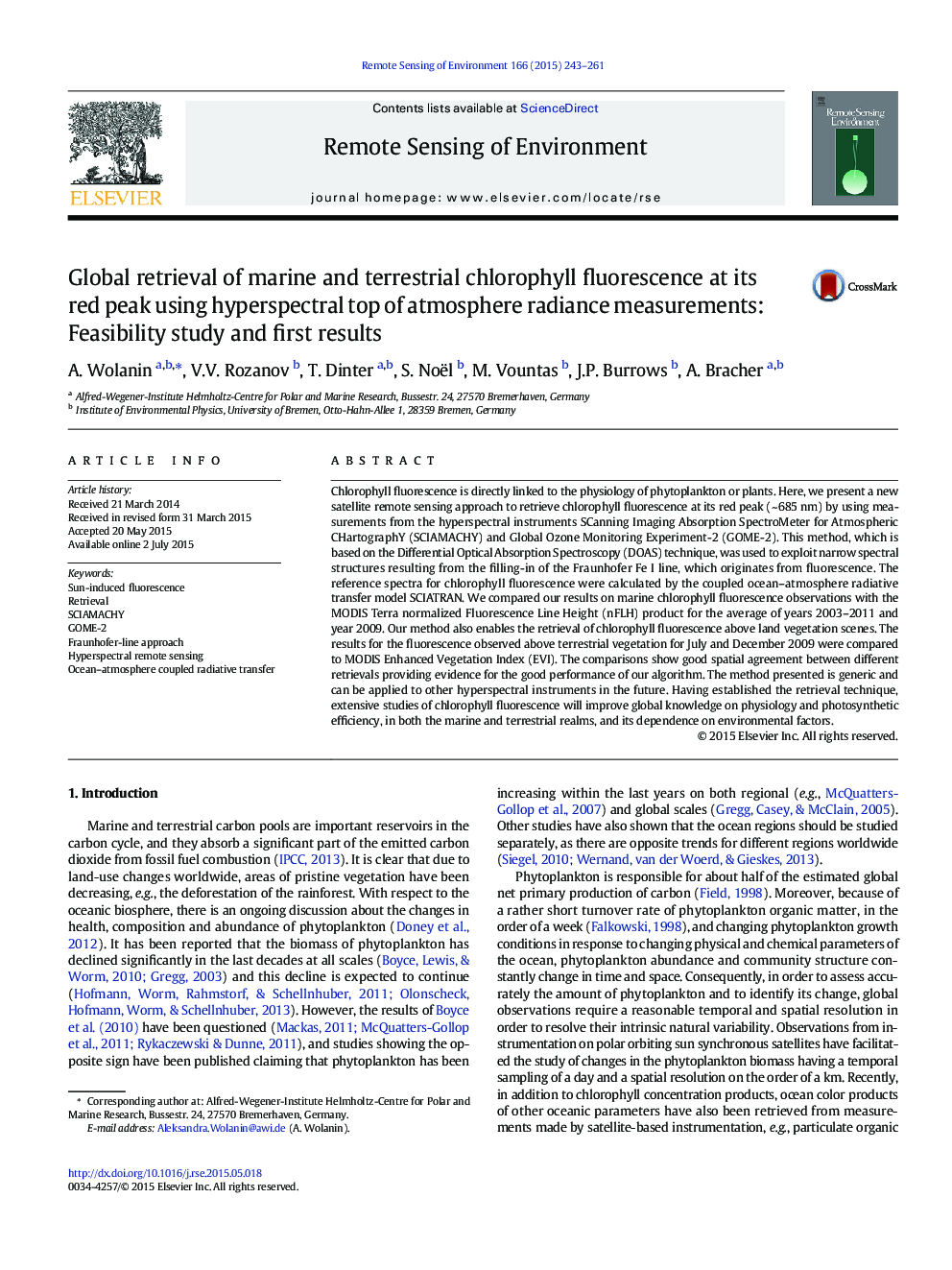| Article ID | Journal | Published Year | Pages | File Type |
|---|---|---|---|---|
| 6345941 | Remote Sensing of Environment | 2015 | 19 Pages |
â¢Detecting filling-in of Fraunhofer lines by marine chlorophyll fluorescence is shown.â¢Retrieval results for instruments SCIAMACHY and GOME-2 are presented.â¢The method is generic and can be applied to other future hyperspectral instruments.â¢We can also observe terrestrial vegetation fluorescence.â¢Our results show spatial agreement with MODIS nFLH (ocean) and EVI (land) products.
Chlorophyll fluorescence is directly linked to the physiology of phytoplankton or plants. Here, we present a new satellite remote sensing approach to retrieve chlorophyll fluorescence at its red peak (~Â 685Â nm) by using measurements from the hyperspectral instruments SCanning Imaging Absorption SpectroMeter for Atmospheric CHartographY (SCIAMACHY) and Global Ozone Monitoring Experiment-2 (GOME-2). This method, which is based on the Differential Optical Absorption Spectroscopy (DOAS) technique, was used to exploit narrow spectral structures resulting from the filling-in of the Fraunhofer Fe I line, which originates from fluorescence. The reference spectra for chlorophyll fluorescence were calculated by the coupled ocean-atmosphere radiative transfer model SCIATRAN. We compared our results on marine chlorophyll fluorescence observations with the MODIS Terra normalized Fluorescence Line Height (nFLH) product for the average of years 2003-2011 and year 2009. Our method also enables the retrieval of chlorophyll fluorescence above land vegetation scenes. The results for the fluorescence observed above terrestrial vegetation for July and December 2009 were compared to MODIS Enhanced Vegetation Index (EVI). The comparisons show good spatial agreement between different retrievals providing evidence for the good performance of our algorithm. The method presented is generic and can be applied to other hyperspectral instruments in the future. Having established the retrieval technique, extensive studies of chlorophyll fluorescence will improve global knowledge on physiology and photosynthetic efficiency, in both the marine and terrestrial realms, and its dependence on environmental factors.
